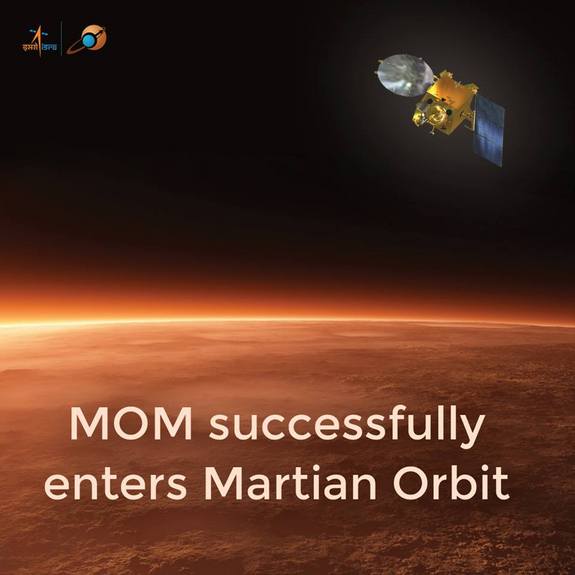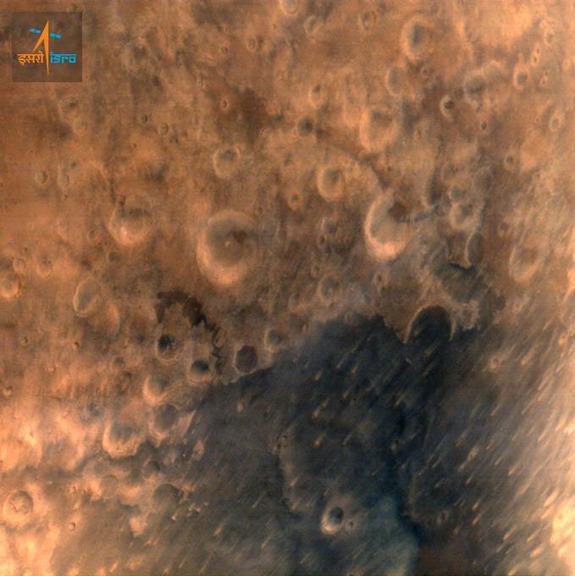India’s Mars Orbiter Mission Makes History
This article is more than 2 years old
 It’s been a big week for Mars, with the arrival of both NASA’s Maven and India’s Mars Orbiter Mission (also known as MOM) probe. Maven will try to gather information about Mars’ atmosphere (namely, where it went), and we’ll definitely be keeping tabs on what it uncovers, but at the moment, the arrival of MOM is bigger news. India is the first Asian country to reach Mars, and only the third space program to do so. It’s also the first country to successfully reach Mars on its first attempt, which indicates the arrival of a new space power.
It’s been a big week for Mars, with the arrival of both NASA’s Maven and India’s Mars Orbiter Mission (also known as MOM) probe. Maven will try to gather information about Mars’ atmosphere (namely, where it went), and we’ll definitely be keeping tabs on what it uncovers, but at the moment, the arrival of MOM is bigger news. India is the first Asian country to reach Mars, and only the third space program to do so. It’s also the first country to successfully reach Mars on its first attempt, which indicates the arrival of a new space power.
MOM entered Martian orbit yesterday, which may not seem as grand an achievement as actually landing on the planet’s surface. However, almost half of all attempts to reach the Red Planet’s orbit have failed, largely due to malfunctions that occur when spacecraft begin complicated positional maneuvering. India’s success here is indicative of a solid space program, and puts the country ahead of China when it comes to exploring Mars.
What is red, is a planet and is the focus of my orbit? pic.twitter.com/HDRWjOcPus
— ISRO's Mars Orbiter (@MarsOrbiter) September 24, 2014
MOM will spend 6-10 months attempting to detect methane signatures in the Martian atmosphere, which could potentially indicate signs of life. It will also gather evidence about Mars’ atmosphere, and the data will be compared to that gathered by the likes of Curiosity, Maven, and other future Mars missions.
It’s also worth noting that India has gotten to Mars on the cheap, relatively speaking of course. MOM cost $74 million, which might sound like a lot, but is pretty thrifty next to NASA’s Maven, which cost $671 million. As some have pointed out, India’s Mars mission cost less than filming Gravity.

MOM recently sent back its first image of Mars, and we look forward to seeing more.












